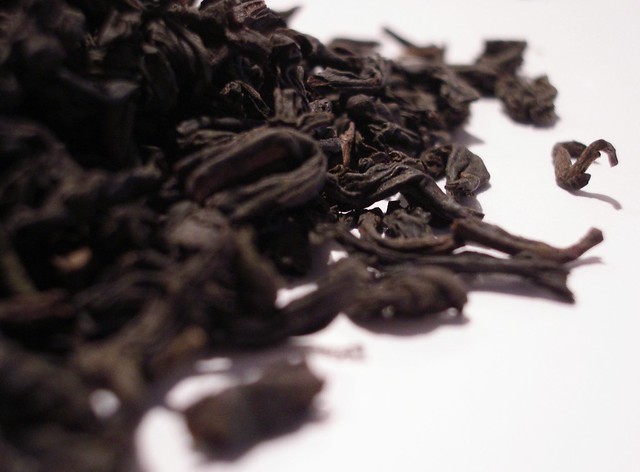 Coarse leaves of lapsang souchong tea. Photo by Selva.
Coarse leaves of lapsang souchong tea. Photo by Selva.
You may have noticed the trend, in the fancy ice cream freezer at the grocery store, for bright green pints of “Green Tea Ice Cream.” The color, and flavor, comes from matcha, the green tea powder that is traditionally used in Japanese tea ceremonies. Although the use of matcha in confections is recent, the idea of tea-flavored ice cream is quite old.
Drinks, like tea, coffee, and “hot” chocolate, were some of the earliest ice cream flavors, first appearing in the 18th century. This recipe for Howqua’s-Tea Ice Cream, from The Ice Book, 1844, particularly captured my imagination.
Basic Custard Ice Cream
-
2 cups heavy whipping cream
-
1 cup whole milk
-
1 vanilla bean (or, other flavoring of your choice)
-
6 large egg yolks
-
3/4 cup sugar
-
1/4 teaspoon coarse salt
-
Additional mix-ins
Add split and scraped vanilla bean to cream and milk in a saucepan. Bring to a boil. In the meantime, in a glass bowl whisk together egg yolks, sugar and salt until blended. After cream mixture comes to a boil, pour slowly on the egg mixture, whisking constantly. Return to saucepan and cook over low heat, stirring constantly with a wooden spoon, until custard thickens slightly and evenly coats back of spoon (it should hold a line drawn by your finger). Pour custard through a fine-mesh sieve into a bowl set over ice, or place in refrigerator, until chilled–overnight is preferable. Churn in an ice-cream maker according to manufacturer’s instructions, adding mix-ins like nuts or fruits in the last few minutes of freezing. Transfer ice cream to a resealable plastic container and freeze until firm, about 2 hours.
I learned about Howqua’s Ice Cream from Ivan Day’s Ice Cream: A History (Shire Library)
